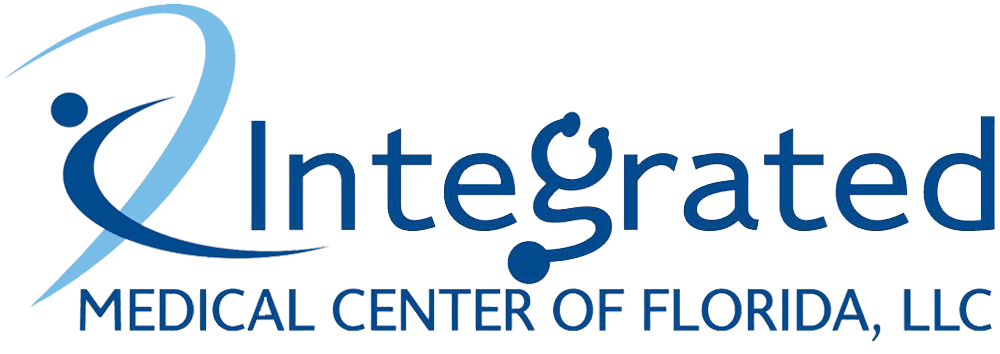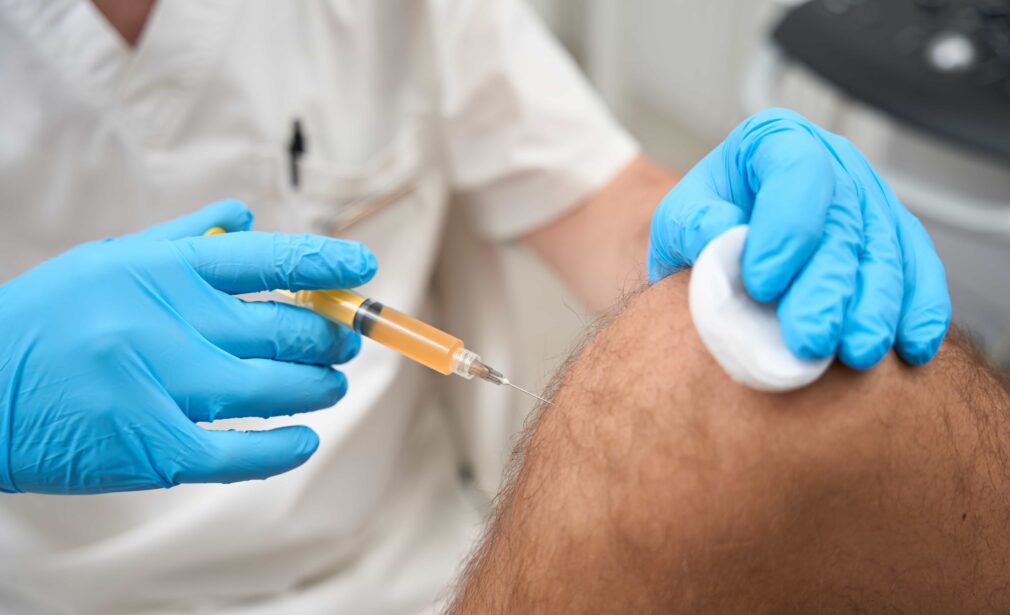PRP Injections
PRP Injections New Port Richey, FL.
Platelet-rich plasma therapy, or PRP, is a treatment modality for arthritis and many other conditions. It is done by drawing blood from the patient and spinning down the whole blood to remove the red blood cells, leaving behind a high concentration of growth factors and cytokines – vital healing properties in the body. This high concentration of platelets and growth factors is then injected into the injured area, where it stimulates soft tissue renewal and joint regeneration.
One of the primary benefits of PRP therapy is its versatility in addressing a wide range of painful conditions. Whether you’re suffering from osteoarthritis, tendinitis, ligament injuries, joint pain, sports injuries, or chronic pain, PRP can be an effective non-surgical solution. By targeting the root cause of your pain and facilitating natural healing, PRP therapy can potentially help you avoid invasive procedures or long-term medication use.
Integrated Medical Center of Florida is a holistic practice providing many internal medical therapies and services to the New Port Richey area.
If you are interested in scheduling an appointment with a member of our team to talk about what PRP injections could do for you, call our office at (727) 816-9616.You can also fill out our online form and we will get back to you as soon as possible.

About Regenerative Medicine
PRP Injections
Orthobiologics, also known as regenerative medicine, are biological materials that can be used to regenerate soft tissue, bone, and cartilage. (1) Platelet-rich plasma has been introduced into orthobiologic medicine to enhance tissue regeneration, allowing patients relief from many different types of conditions. Typically PRP is applied to tendon-related issues, but as more and more research and application occurs, they may also be useful for back pain management, certain dermatologic applications, and even hair regrowth. (2)
PRP VS. CORTISONE INJECTIONS FOR PAIN MANAGEMENT
Cortisone is a steroid used in pain management. Cortisone injections are often used to relieve patients of inflammatory symptoms within joints. For instance, if someone has a painful knee injury, they can receive cortisone injections to act as a long-lasting anti-inflammatory medication. Studies have shown that PRP injections, like cortisone, can offer significant relief to these patients as well. They often offer a longer duration of action than cortisone injection, and can potentially delay the need for reconstructive and replacement surgeries. Cortisone injections often provide relief for 3 to 6 months, and PRP injections have the potential to last 6 to 9 months. (3)
When activated, PRP releases growth factors from what are called alpha granules. Growth factors are bioactive proteins that reside in the blood’s plasma. These proteins are what give PRP therapy its regenerative properties and allow for the production of new, healthy tissue. When injected, the bioactive proteins promote the damaged or deteriorating tissues already present in the body to start healing, triggering the body’s natural healing processes. This makes it a biocompatible, therapeutic option for patients looking for relief. (2)
Benefits of PRP Injections
PRP therapy is safe, effective, and uses your own blood. There is a much lower risk of reaction compared to other injections. PRP can also: (1)
- Establish tissue homeostasis: This encourages healing and regeneration.
- Increase blood flow: Joints have minimal blood flow, making them slow to heal themselves. PRP injections encourage this by using your own organic materials.
- Provide longer-lasting relief for joint pain.
- Delay or prevent major surgery.
- There are many reasons to get PRP injections to relieve pain and discomfort in your joints and tendons. If you are experiencing symptoms of tendonitis or other potentially debilitating conditions, your situation is not hopeless. If physical therapies and other remedies are not working, PRP can be a safe alternative to steroid treatments.
Ideal Candidates for PRP Injections
Patients who have the following conditions may also make good candidates for PRP injections:
- Tendon Injuries
- Achilles Tendonitis
- Jumper’s Knee
- Tennis Elbow
- Ligament and Muscle Injuries
Other reasons to receive PRP injections include:
- Osteoarthritis
- Mild to moderate tendinosis or tendinopathy
- Sensitivity to anti-inflammatory medications (aspirin, ibuprofen, etc.)
- Physical therapy hasn’t provided relief
- Steroid injection hasn’t provided relief
- Surgical treatment is not optimal or wanted
Personal Consultation
At Integrated Medical Center of Florida, our team members provide personalized consultation to every patient we see. During your appointment, we will assess your injury carefully to determine if PRP injections are right for you. If you have been receiving steroid injections or physical therapy to rehabilitate the injury, make sure to tell us whether or not you’ve seen progress in your healing. We will ask you about your medical history and any past injuries or surgery that may affect your PRP injection treatment plan. We may also suggest incorporating physical therapy into your treatment plan as well, to help accelerate healing and add support to the injured area.
A member of our team will help you schedule your first injection appointment and any follow-up appointments you may need. The process is quite simple, and as long as you qualify for PRP injections, we can quickly get you on the path toward relief.
How Can I Prepare for PRP Injections?
To prepare for PRP treatment, you should discontinue any steroid medications at least three weeks before your first injection. In the week leading up to your treatment, avoid taking NSAIDs and herbal remedies that cause blood thinning. Make sure to stay hydrated leading up to and on the day of your injection. This will help you achieve an optimal outcome.
PRP Injection Therapy Procedure Process
To start the procedure, your doctor draws your blood. Usually around 10CCs of autologous blood is needed to obtain enough PRP after centrifugation. The blood is then placed into vials and spun very fast by a centrifuge. This process separates the heavy substances of the blood from the lighter ones, allowing the platelet-rich plasma to be separated and used for injection.
Once the PRP is ready, your doctor places it into a sterile needle and cleans the injection site. At this stage, they may apply a topical numbing agent to help alleviate discomfort. Then they will inject the PRP into the treatment area, sometimes with the use of ultrasound to better visualize the path. Your doctor applies a bandage to the injection site and the procedure is finished.
Recovery & Results of PRP Injection
Most people can continue their daily activities following PRP injections. You may not feel a decrease in your discomfort right away, but patients report longer-acting relief in the months following their treatment. Try not to be discouraged if you don’t see the results you are looking for right away.
Some patients feel significant relief after just one or two injections. For others, the treatment can be repeated up to three times within six months. This usually leads to an injection every 2 to 3 weeks, giving the patient plenty of time to determine their pain levels and whether additional injections are necessary.

